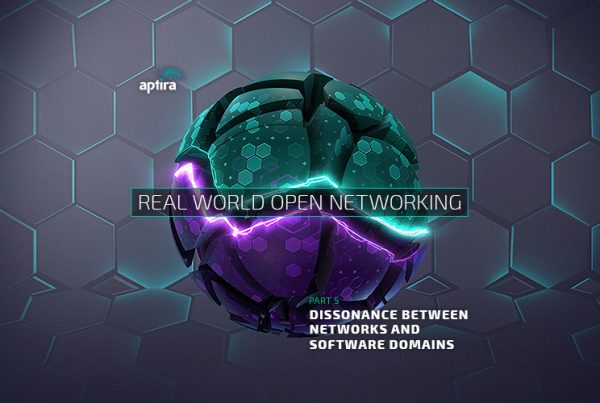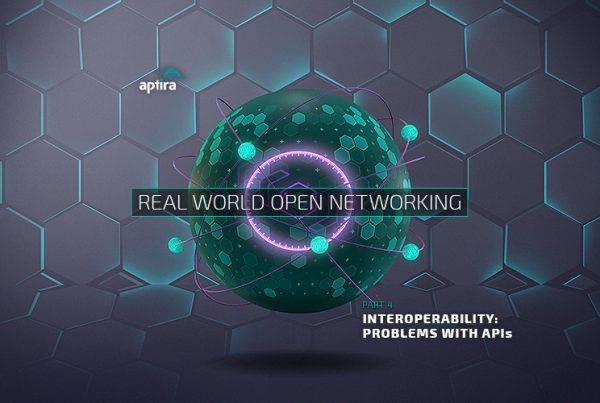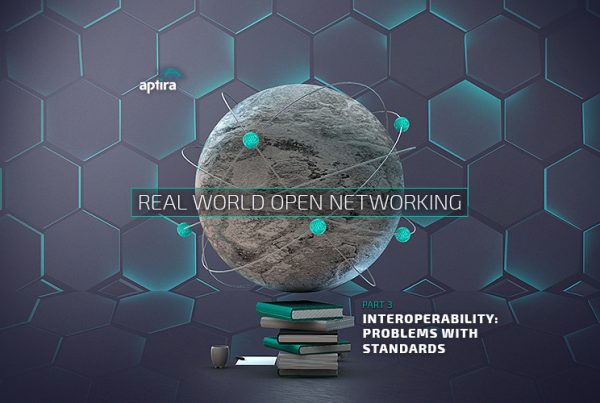
Following our Software Interlude posts, which we completed with this post on Development Paradigms, we now move on to unpacking the the third and last domain: Open Network Integration.
- Agile Methods
- DevOps
- Systems Integration
If you need a quick recap of the three domains of Open Networking refer to the second article in this series. Also, the first post in this series a describes the enablers of Open Networking.
The Integration Domain Overview
By integrating these technology enablers, Open Networking combines many practices, technologies, occupations and organisational units into one discipline which previously were quite distinct and separate.
The Integration domain includes not only technical integration but the process and operational integration required for these disparate practices to work cohesively so that we can define, build and operate an Open Networking solution.
Whilst this might sound easy, anyone working in the Open Networking space will have experienced the dissonance that can occur when these multiple worlds collide; we began to outline this in the Software Interlude.
The Open Network Integration domain provides a holistic view of the Open Networking solution that is being built and/or operated. Integration covers both the complete scope of functional and non-functional requirements of the solution as it is being built, and the end-to-end lifecycle view from conception through build to operations.
To the extent possible, the Integration domain fosters continuous and seamless transition through these lifecycle stages rather than the discontinuous build to operations approach that is common historically. Nonetheless we need to be able to deal with traditional approaches that may be still prevalent in many organisations.
To achieve coherent and performant solutions, we need a sharply focused perspective that leads us to success: in this, the Integration domain is literally “the tip of the spear”.
The Integration Domain Overview
To address the broad integration requirements of Open Network solutions, we include three complementary practices that extend end-to-end throughout the lifecycle of a solution.
- Agile Methods
- DevOps
- Systems Integration
Here’s a quick preview of what we will cover in the remaining posts of this series:
Agile Methods and Processes
Agile methods and processes have been used for decades, long before the Agile Manifesto – they were just called something different. There are numerous documented benefits, but they are still widely misunderstood and misapplied, despite the pervasion and success of the many “brand name” methodologies (e.g. “Scrum”).
Regardless of the individual methodology, Agile builds solutions in small increments in close collaboration with end users. Agile projects move towards final functionality using an “inspect and adapt” approach. Agile fosters, and depends on, positive human dynamics (e.g. self-organisation), to facilitate communication, collaboration and to ensure a stable and coherent project team structure.
To succeed in complex “multi-everything” Open Networking projects, Agile provides more flexible and change-friendly approaches, with the primary focus of enabling end-user value creation rather than technical deliverables.
Agile practices are designed to meet these requirements and typically fill the gap between end-users or platform user stakeholders and the project team in a development project.
DevOps
The Integration domain includes DevOps as the means to highly performant production systems via automation of the entire lifecycle. DevOps is closely related to Agile but distinctly focused on the bridge between development teams and operational teams, where Agile focuses on the bridge between business teams and development teams.
DevOps practices such as CI/CD can support an Agile project and ease the delivery into production of components developed by the agile team.
Systems Integration
Systems integration is a set of practices that augment the above two elements of the Integration domain. This includes the generic practises common to all solution realisation projects, e.g. software development, Project Management, Network and Systems engineering, procurement and so forth.
Systems Integration is needed due to the unique requirements of Open Networking solutions.
Conclusion
Integrating Open Network solutions is one of the most complex forms of systems integration project. The benefits are great, but so are the challenges that must be addressed to achieve those benefits.
At its most simplistic, Open Networking is about the Integration of infrastructure and software into performant solutions to meet customer needs. At its most complex, Open Networking makes unique and significant demands of any integration practice.
The three practice enablers of the Open Networking Integration domain address these requirements.
As expert practitioners in the field of “Open Networking”, Aptira can help guide you through these considerations to a desired outcome.
We will expand on these topics and more in upcoming articles.
Stay tuned.







